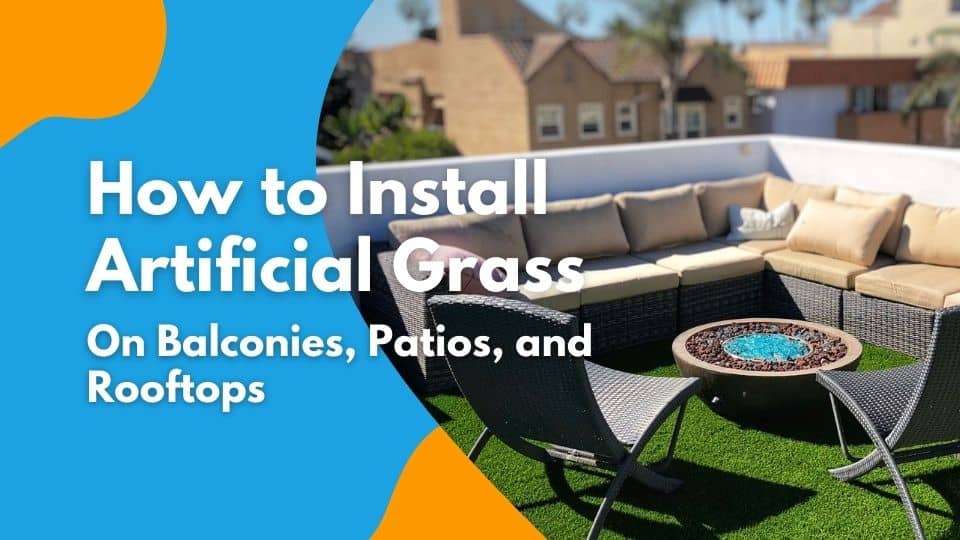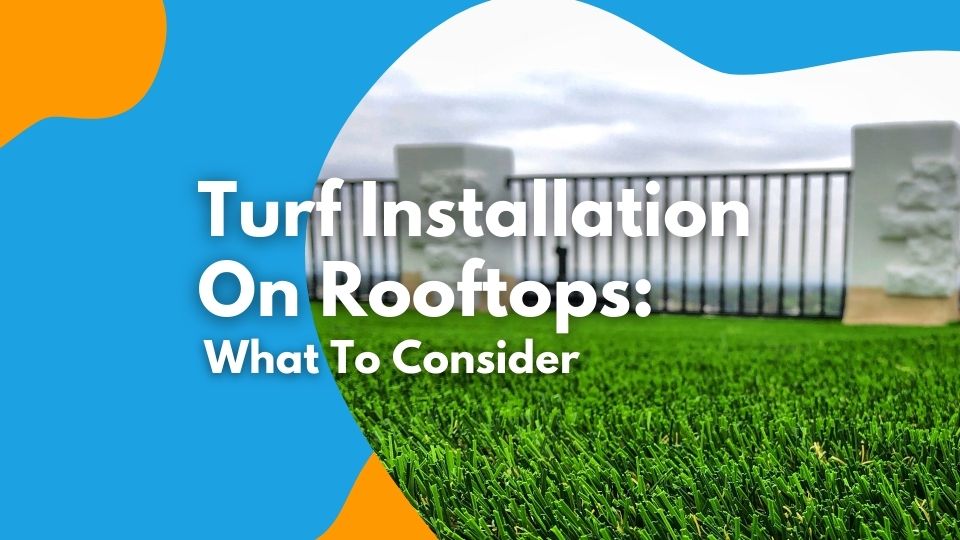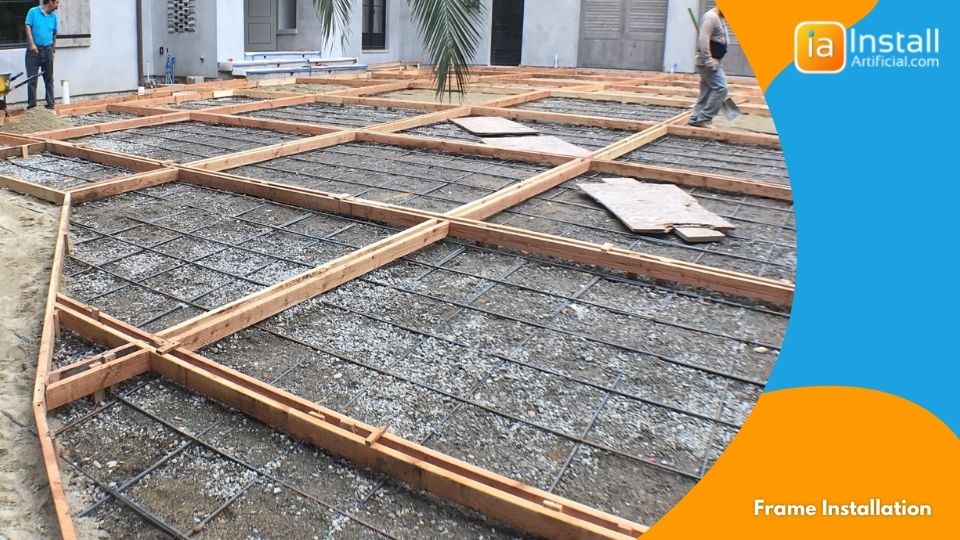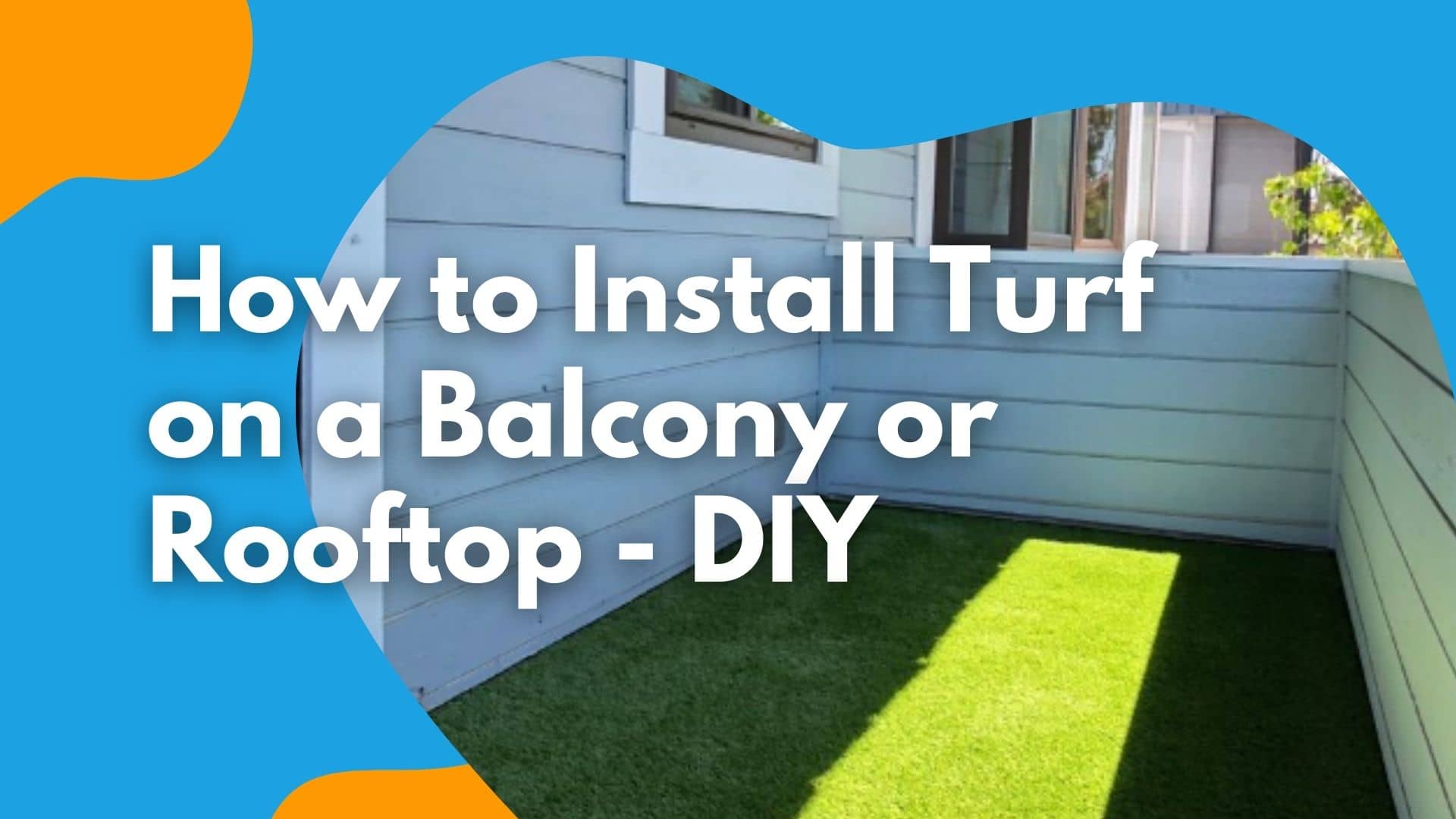
A complete guide on how to install artificial grass on balconies, patios, rooftop decks, and other hard floor spaces. Determine if this is what you need. Learn about the...
While putting artificial turf on a rooftop deck is a creative long-lasting way to enhance your space, it can come with costly repairs if not designed and installed correctly. Below we'll share a few things to keep in mind while discussing the installation with your installer.

If the roof is in any way damaged we do not recommend applying artificial grass on top of it. The turf itself doesn't provide insulation and therefore won't provide any added protection. If at any point after installation there are leaks coming from the roof, it becomes significantly harder to pinpoint where the leak is coming from and can become a lot more costly. For this reason, you should never install artificial turf directly to the base of the roof so that it can be removable when the roof needs inspection.
Fortunately, most rooftops are designed and constructed with water flow in mind. We don't recommend installing artificial turf in an area that has an issue with water pooling. You don't want your artificial grass retaining water. If water builds up, mold mildew and roof leaks can occur. Before installation, you must confirm that there is somewhere for rainwater and other liquids to go.
When it comes to the drainage system, there are a few options that are considered. Before making a decision it's important to really diagnose which option will work best for you and your space. Below are the drainage systems we offer at InstallArtificial:

Magnification is a common issue with Artificial Grass. Like anything laying in direct sunlight, artificial grass can become warm on high-temperature days. Only nylon turf can hold up against severe temperatures and it's double the price. Magnification happens when the sunlight is reflected onto the surface of your artificial grass. This can cause the material to melt. Magnification is usually more likely on balconies, but if you experience reflections from any neighboring buildings, this may affect you.
If you spot any white reflection lines along the surface of your rooftop, there's an easy way to determine if artificial turf will melt in that area. You can place a piece of plastic in the area and observe. Don’t leave the plastic bag unattended because in some cases this can cause a fire. If by mid-day the plastic isn't phased, turf more than likely won't melt in that space.
When it comes to installing synthetic turf, the process can vary depending on whether you're installing it on a balcony or a backyard or front lawn. In the case of a backyard installation, you can expect to find dirt, soil, and/or gravel beneath the surface of the grass. However, on a balcony, you'll typically encounter a thick layer of brick or concrete.
It's important to consider this difference when selecting your synthetic grass landscaping. The type of artificial turf you choose can have an impact on the final outcome, and proper drainage must be installed to prevent any flooding on your balcony. To ensure that your synthetic turf landscaping turns out perfect the first time, it's advisable to choose a synthetic grass installer who specializes in balcony installations or has a proven track record with them.
Securing artificial turf on an open balcony or rooftop can be quite a challenge, as there is an increased risk of uplift due to the lack of enclosure. But fear not, we have some tricks up our sleeve to keep your turf firmly in place! When dealing with an open balcony or rooftop, it is essential to take extra precautions to ensure the longevity and stability of your artificial grass installation. To tackle this issue head-on, we highly recommend two effective methods:
The first is to apply weight to the surface by using sand infill. This helps to anchor the turf down and prevent it from being lifted by strong winds. The sand infill should be evenly distributed across the surface, providing the necessary stability to withstand gusts of wind.
The second method involves utilizing a professional adhesive to attach the artificial grass to the balcony. This ensures a secure and durable installation that can withstand even the strongest wind gusts. By using a high-quality adhesive specifically designed for this purpose, you can have peace of mind knowing that your turf will stay in place, no matter the weather.
While these methods may sound simple, they are highly effective in ensuring the longevity and durability of your artificial turf. By taking the time to properly secure your installation, you can enjoy the benefits of a beautiful and low-maintenance balcony or rooftop oasis. Remember, when it comes to securing artificial turf on an open balcony or rooftop, it's all about being proactive and thorough. By implementing these tricks, you can rest assured that your artificial grass will withstand wind gusts and remain intact, providing you with a beautiful and enjoyable space for years to come.
Installing a frame around the perimeter allows us to attach the artificial grass to the frame, rather than directly to the ground. This is beneficial because it makes getting underneath it easier in the event that repairs need to be made. It is much more cost-effective to repair a damaged frame than the surface of your rooftop. Another benefit to frame installation is that it will prevent the surface from wrinkling over time without the need for infill. Without infill, you have the ability to vacuum the surface making cleaning super simple. Also, frame installation eliminates the need for a sticky adhesive to secure the turf.

While this is not something most people think to consider when deciding if installing artificial grass is the right decision, it can affect the space. Doors that open outward onto the roof can have issues getting stuck on artificial grass. If the door can't easily open and close after your turf installation this can quickly become a safety hazard. In this situation, we recommend either trimming the grass to allow the door to open, or installing a piece of shorter turf in that area. If you do have a door that opens outward onto the rooftop, double-check that there's at least a 1-inch gap to allow enough space for turf placement.
One thing to keep in mind is that if you're planning to use heavy furniture, it will in time leave an imprint on your artificial grass. For any large pieces of furniture, we recommend moving them around every few months to prevent imprints from occurring. A thick and durable grass is best when planning to fill the space with furniture. Thicker turf will also keep your furniture more level.
Artificial grass can be damaged by any hot embers or coals from fire pits and grills. It is not recommended to place these items on artificial grass. However, this can be easily avoided by installing turf in a smaller area to utilize the grassy space while still enjoying those amenities on a hard surface.
We discuss all these considerations with our clients before moving forward with installation because we care about the lifespan of your artificial grass and don't want to cause any costly repairs in the future. To get your project started, use our cost calculator below to get an idea of pricing!
Want to DIY? Start shopping for balcony turf materials on our online turf store now!
By utilizing the recommended installation techniques, such as using high-performance turf with dual backing, high-quality infill, and securely fastening the installation with staples, nails, and turf adhesive, the artificial turf can be effectively secured on the balcony to withstand wind gusts and other weather patterns.
What installation accessories should be utilized to securely fasten all aspects of the installation to the balcony?
Staples, nails, and turf adhesive are recommended installation accessories to securely fasten all aspects of the installation to the balcony or rooftop.
What type of infill should be used to weigh down the base of the turf?
You can use any infill to weigh down turf. Silica sand is the most basic and common infill. However, for the best results in bacteria prevention an antibacterial infill is suggested. Keep in mind that opting for infill in turf on balconies and rooftops will remove the ability to vacuum the surface. Instead, you can use furniture or adhesive to weigh the turf down.
What does dual backing do for artificial grass?
The dual backing of our high-performance turf not only enhances the strength of the seams but also ensures exceptional durability that surpasses other artificial grass products.
High-performance turf that is heavier with a higher pile height is recommended for balconies in areas with high-speed winds. The heavier the material is, the more it can naturally weigh itself down. Plush and dense turf is also ideal for barefoot friendly areas.

A complete guide on how to install artificial grass on balconies, patios, rooftop decks, and other hard floor spaces. Determine if this is what you need. Learn about the...

Looking to add some greenery to an otherwise drab space? Artificial grass is an excellent addition to balconies, patios, and rooftops to give you a bare-foot-friendly...